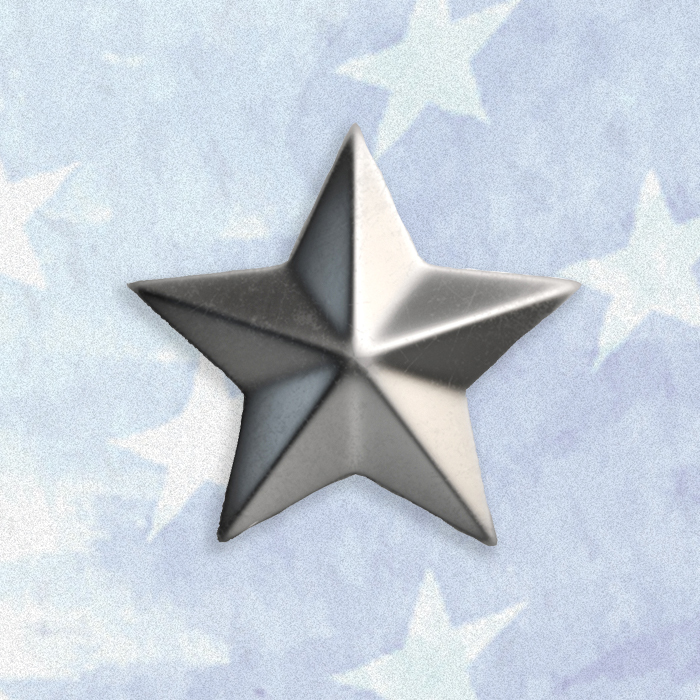
TU’s Home for Veterans
The Military and Veterans Center provides educational, social and personal enrichment opportunities.
Find Out More
The National Veterans Memorial and Museum honors the men and women who served their country. Stacey Queen ’15 is honored to serve them.
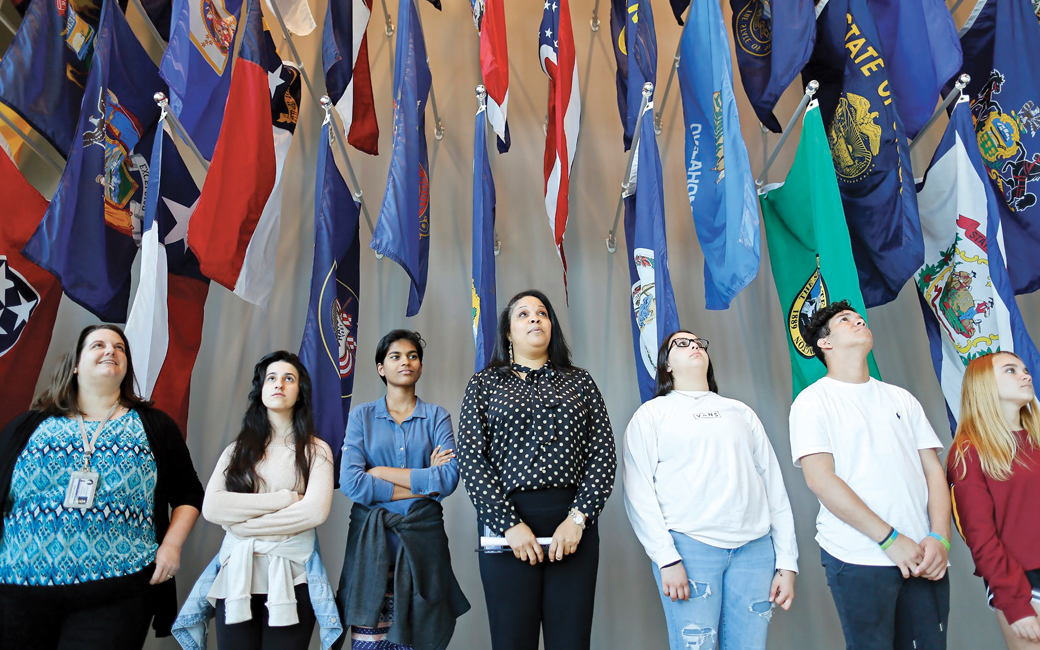
On occasion, Stacey Queen will ascend from her office on the lower level of the National Veterans Memorial and Museum and stroll through the exhibition space.
As visitors navigate the 15 alcoves that highlight key themes and moments in veterans’ journeys and personal stories, or as they follow an extensive timeline starting at the Revolutionary War and ending in Afghanistan, Queen ’15 observes their reactions.
“I’ve never been in a space where people just open up,” says Queen, the museum’s public programs manager. “Veterans—and sometimes their families—can become very emotional. The wife of one older couple once pulled me to the side and said that her husband began to tell a story that he had never talked about. She felt like the museum was an amazing place where her husband felt comfortable.”
The nation’s only museum dedicated to the men and women who have served in its armed forces opened its doors just over a year ago. It is not a solemn place, but it is a serious one. Perched on the west bank of the Scioto River in downtown Columbus, Ohio, its mission is to “preserve not only the names, dates, and battles but the intimate memories, personal belongings and painful losses of our nation’s veterans.”
Queen plays an integral role in ensuring that mission reaches children. It’s a position in a place in a city that the 46-year-old Baltimore native never imagined she’d be in, but one she’s honored to occupy.
“The museum is so personal for many of the visitors,” she says. “I think it’s a place where they can really reflect on how grateful we are as a country for their service.”
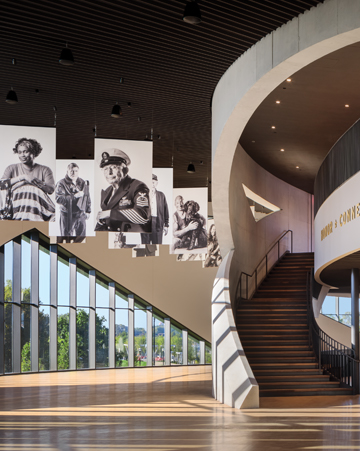
Queen’s father, Albert, served during the Vietnam War, but he’s not the only veteran in the family. Her parents have the discharge paper of a relative who was in the Union army during the Civil War.
When he returned to civilian life, Queen’s father traveled often and worked long hours for the federal government in Washington. To occupy her only child, Queen’s mother would often take Stacey to museums around Baltimore.
“My first museum experience was at The Walters Art Museum,” Queen says. “I was so fascinated by mummies there. Museums have always been safe spaces for me. I could be in my own little world.”
Still, she never thought she would work in one. After attending Hampton University, she married and settled in Richmond, Virginia, where she raised two kids and owned a beauty salon. But after 15 years her marriage crumbled, so she moved back to Baltimore.
“I really had to do some soul searching,” she says. “I went through my little phase of being slightly depressed about it, but I didn’t let it hold me back. I didn’t let it consume me. I said, ‘OK Stacey, pull yourself up by your bootstraps.’”
That she did. Always passionate about art, she contacted Susan Isaacs, a professor in TU’s art + design, art history, art education department, who told her she didn’t meet the requirements for admittance into the art history graduate program, but provided her with encouragement and a roadmap forward.
“Dr. Isaacs was so instrumental in mentoring me and helping me mold my career,” Queen says. “She was an extraordinary help to me.”
Queen took additional undergraduate courses at night while she taught art in the Baltimore City Public Schools system, and eventually was admitted. She worked part-time at the Baltimore Museum of Art, The National Great Blacks in Wax Museum and the Maryland Historical Society while pursuing her master’s.
After earning her degree, she landed a job at the Wadsworth Atheneum Museum of Art in Hartford, Connecticut, the oldest public art museum in the country.
She was at the Wadsworth for nearly five years when she learned of the opening for a public programs manager at the then-still unfinished National Veterans Memorial and Museum in Columbus, a city where she knew no one. She was hesitant to pursue it, but pushed herself to try something new.
“You won’t see any art outside of photography here,” she says. “It’s about the stories of our veterans and making this human connection. This museum takes the visitors on a journey from that moment when a person decides to become part of the armed forces and takes the oath to what it looks like once they’re deployed and then come back home. It tells a narrative of service and what that means to us as a community, and to the country as a whole.”
Queen helps communicate that story. She’s designed curricula encompassing various academic subjects and spanning all grade levels. With little ones, she discusses the history of the flag and museum etiquette. Older students write letters to deployed service members and learn about different roles in the military and the way technology is used in the armed forces today.
“We want to make the connection between what students are learning in the classroom
and what they can learn by coming here,” she says.
John Glenn was a military hero who flew 59 combat missions in World War II and 90 in the Korean War, an astronaut
who was the first American to orbit the earth and a four-term senator from Ohio. He
died in 2016 while working on one of his most personal projects: establishing a museum
for veterans in his beloved Buckeye State.
The result of his vision is striking. Constructed from 28 million pounds of concrete, the building has unobstructed views of Columbus’ skyline, yet feels peacefully removed from the hustle and bustle of a city. In naming it one of the most anticipated buildings of 2018, Architectural Digest wrote, “While the design of some museums scream for attention, the National Veterans Memorial and Museum is beautifully understated, honoring the country’s veterans . . . Indeed, much like the people it’s honoring, the structure has a dignified form that appears to be organically grown from the ground.”
A 2.5-acre memorial grove outside the museum, free to all, offers visitors a place for quiet reflection and contemplation. Inside, 50,000 square feet of space includes a great hall, exhibition galleries, a second-floor mezzanine and a lower level with a rotating gallery, classrooms, offices and meeting rooms.
There are many interactive exhibits, including one where visitors can put on a backpack filled with up to 75 pounds of gear to feel what soldiers endure when patrolling or embarking on a mission. In another, guests post handwritten questions that can be answered by a veteran who might pass by.
“What do you guys eat?” reads one.
“A lot of PB and Js,” a veteran scribbled back.
The museum, which is officially designated by Congress but receives no federal funding, opened on October 27, 2018. It was a cold, dreary day, but that didn’t dampen the enthusiasm of the guests in attendance, or of Gen. Colin Powell, the keynote speaker.
“I retired from the army 25 years ago this month, after serving 35 years, three months and 28 days,” he said. “I immediately became a veteran and was proud to be one. I was honored to join the ranks of 20 million Americans who proudly call themselves veterans. We are all now of the same title, and the same rank: veteran. I am deeply moved to be here as we bring to life this memorial and museum.”
And alive it is.
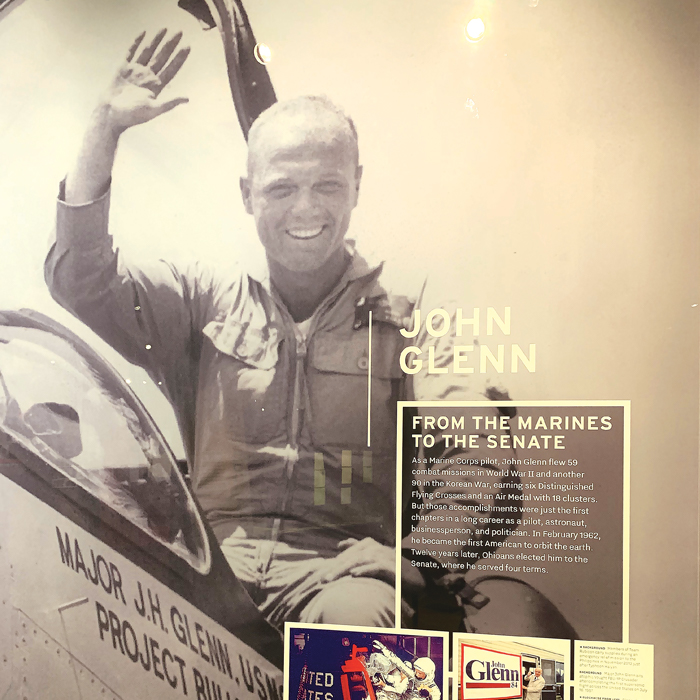
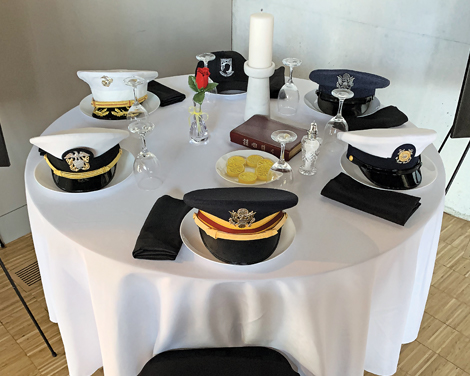
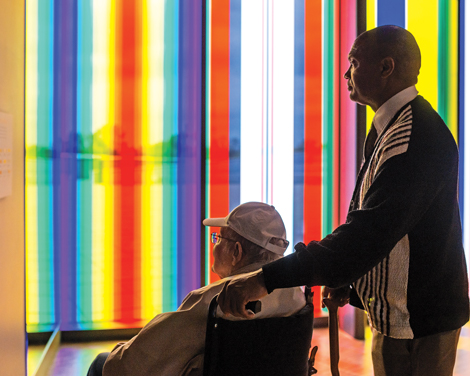

Whenever one of the branches holds a formal dinner or event, one table has an empty chair to honor POWs and MIAs.

A stained glass installation inspired by military campaign ribbons lines the Remembrance Gallery.
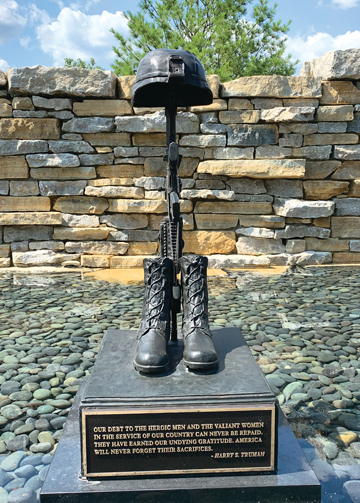
The Soldier's Cross is one of two monuments in the Memorial Grove.
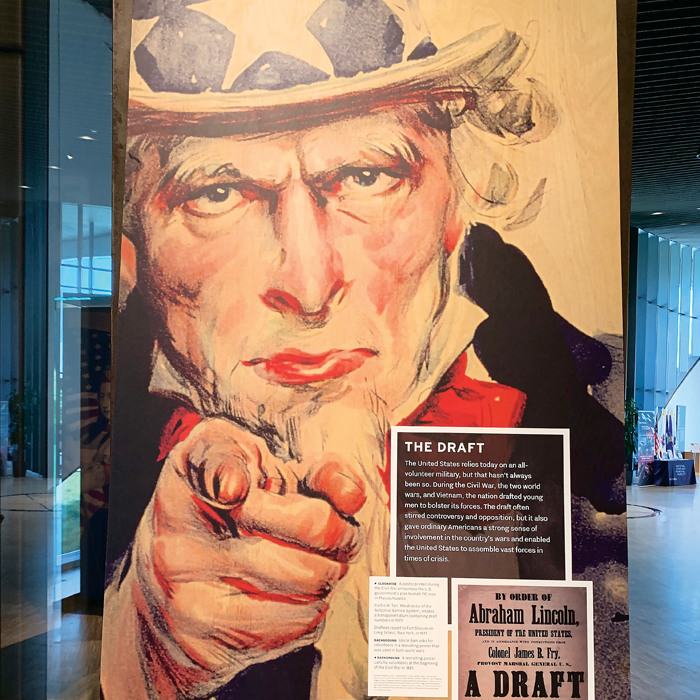
An alcove details the history and controversial nature of the draft.
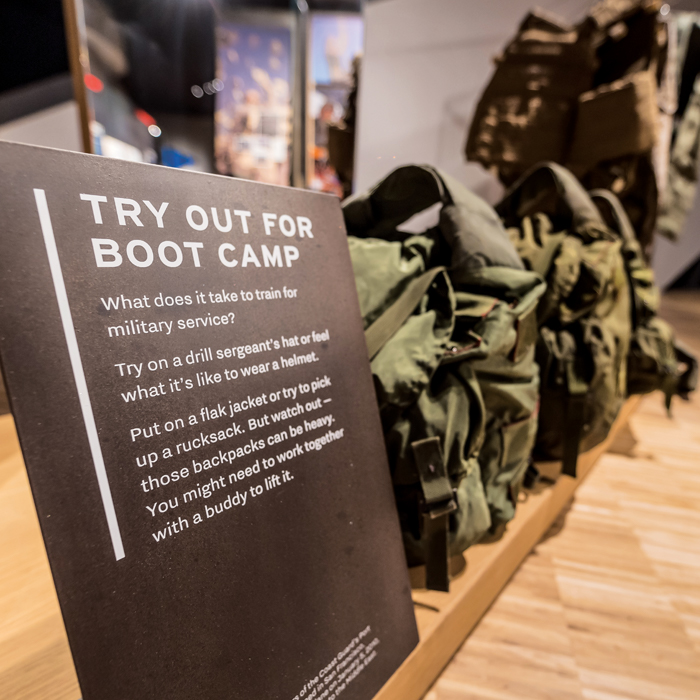
Visitors can try on a helmet, flak jacket or rucksack to get a sense of what it feels like to wear military gear.